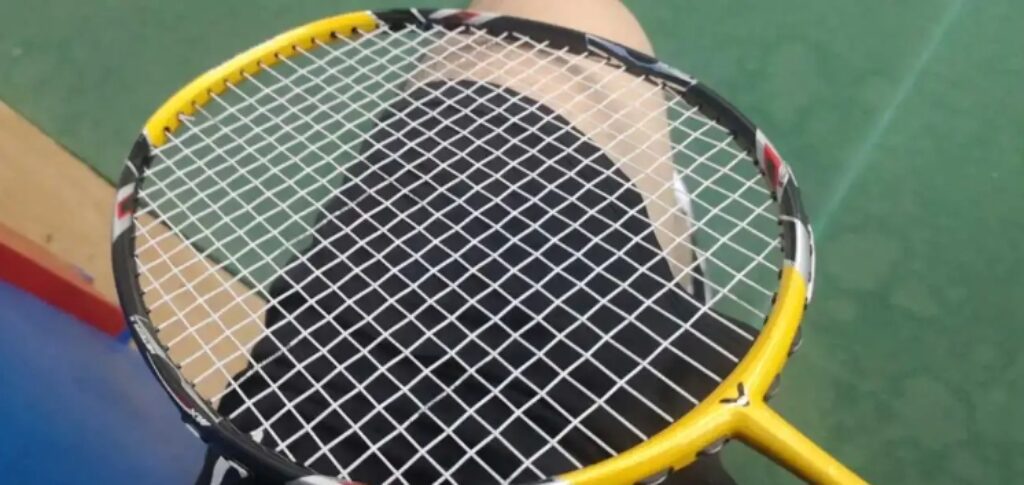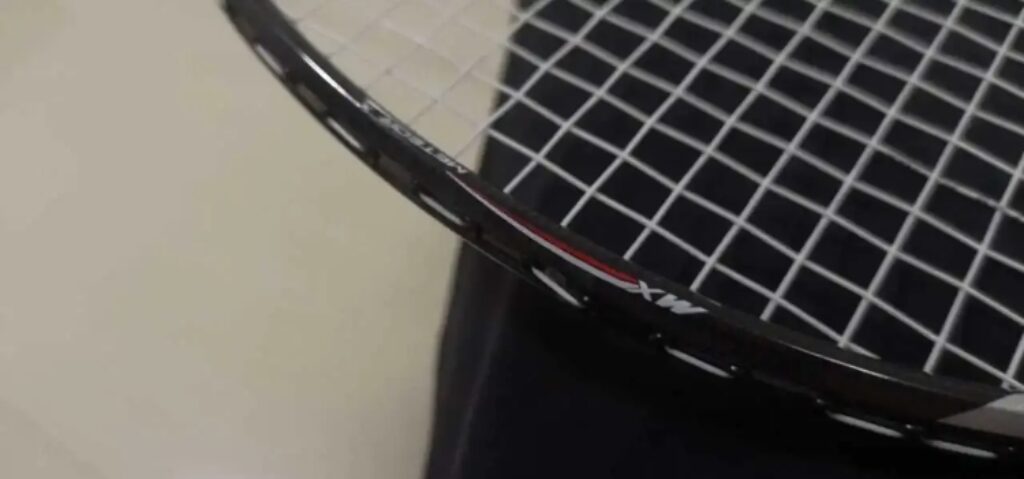Yes, the Meteor X.
This is the third racket, and now I’ve got an MX60. This racket seems to have a slightly better reputation than the 30L, perhaps because its number is closer to the king, the MX80. Moreover, generally speaking, reaching the number 6 usually signifies the transition to true high-end models.
It’s not easy to impress badminton players in 2023 with a product from 2012

Specifications:
Weight: 3U G5, without grip, total weight in use: 93.0g, balance point: 305mm, shaft thickness: 7.2mm, shaft length: 218mm, stiffness: medium to high.
Frame: octagonal aerodynamic frame, 80-hole string bed, grooves at 9-3 points.
String tension: 28 lbs recommended, strung at 24–26 lbs with BG65Ti.
I have a deep impression of Victor’s yellow rackets, probably due to how striking the color is. On the MX60, I’d describe it unpoetically as “construction vehicle yellow”—or if we use the Colombia 6’s term, “mango yellow”—though to me, it feels more like the HX60. Regardless, the carbon fiber texture beneath the clear coat on the wings of the frame, the bright silver stickers at the paint junctions, and the prominent “X” on the shaft make this niche high-end MX look sharp and stylish.

When I first held it, I had no doubts about its MX series heritage. It feels balanced, with a pronounced sense of stability, regardless of the actual shaft stiffness. Perhaps it’s just intuition, but the sharp “whoosh” sound when swinging the racket is unmistakable.
However, after a few clears on the court, it became evident that the MX60 retains the series’ familiar “wooden” feel—quiet and subtle.
That said, the overall feel remains very good. Despite its muted response, the racket’s stability in initiating shots offers excellent precision. This can be attributed to the denser sweet spot provided by the 80-hole string bed and the stronger torsional resistance of the 7.2mm shaft. The racket doesn’t have a strong drive feel, but it’s not difficult to handle, making it relatively easy to execute beautiful clears.

Is it enjoyable? Compared to the cheap, flexible, and springy rackets of today, it doesn’t aim to please the user. However, this solitary character prompts the player to adopt a more serious attitude toward the MX60, offering the endorphins of self-discipline as a reward.
This is particularly noticeable in smashes; while it doesn’t feel overly head-heavy or elastic, its high energy transmission efficiency pushes you to improve. In powerful smashes, the MX60 doesn’t feel as raw or exhilarating as the MX80, but its consistent output and slightly reduced stiffness provide a longer-lasting sense of assurance in extended rallies, preventing fatigue from setting in too early in a match.
Flat drives are another strong point of the MX60. Besides the well-known stability, its fast swing speed and quick recovery make midcourt duels enjoyable. Although it’s not as agile to the point of being deadly, it’s sufficiently versatile. The ample tolerance of the 80-hole string bed’s sweet spot allows you to confidently rally at high speeds.

When counterattacking smashes or driving to the opponent’s rear court, it shares the MX80’s crisp rebound feel, delivering the shuttle cleanly without unnecessary fuss.
Using this racket means you need to improve yourself to find satisfaction. Although the MX60 is relatively gentle, it doesn’t pander. Its high performance potential becomes its greatest strength, turning even its muted feedback into an asset. Those who shy away from rackets that don’t flatter the user will miss out on the charm of the MX60.


Leave a Reply